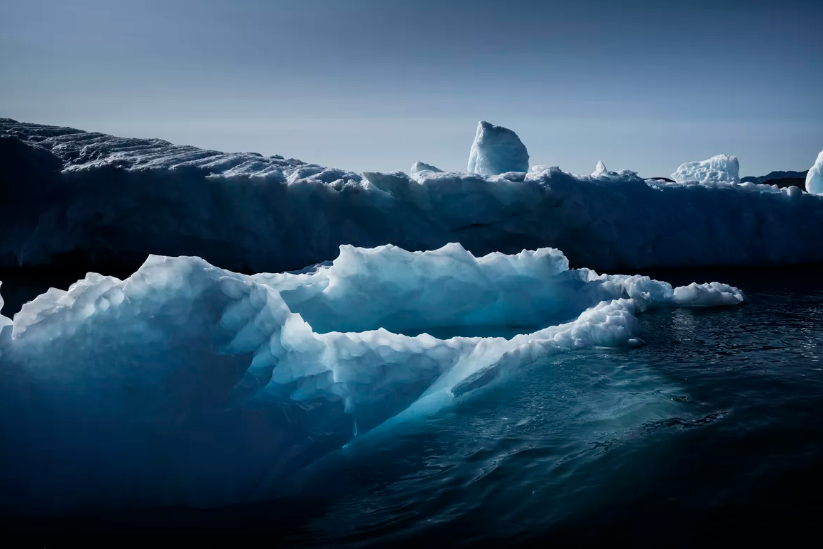
1. Melting Greenland Has Lost 1 Trillion Tons More Ice Than Thought
The Greenland ice sheet, an expanse of frozen water about three times the size of Texas, is disappearing much faster than previously thought, and the difference may be affecting the distribution of heat around the world. The mass of ice lost between 1985 and 2022 has been underestimated by as much as 20%, or more than 1,000 gigatons (1 trillion metric tons).
That’s due to the overlooked impact of calving around Greenland’s perimeter, where the sheet’s glaciers meet the sea. The shrinking of Greenland’s ice sheet is contributing to higher seas, but the melting likely had minimal impact because it occurred in deep fjords leading into the ocean, where the ice was already mostly underwater. However, as that part of the glaciers disappears, inland melting is likely to accelerate and will raise sea levels as that water flows into the ocean.
Thank you for your generous gift that will help us continue the production of this weekly, free publication
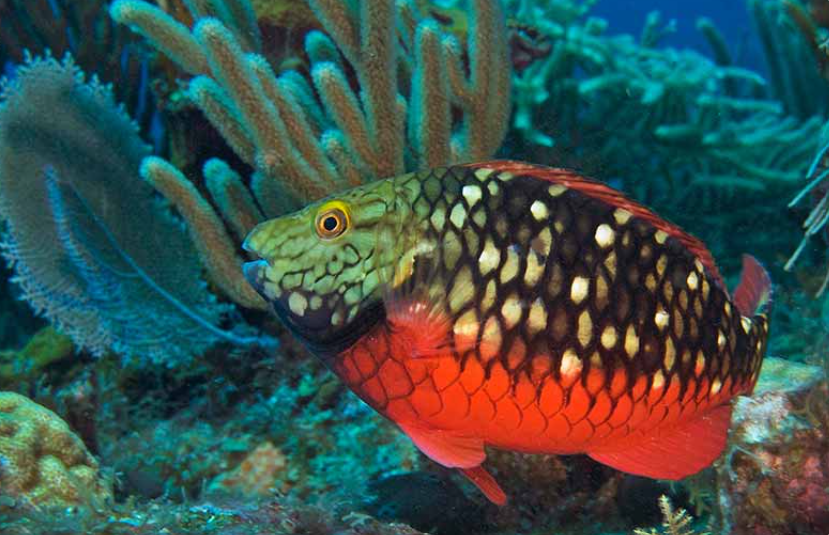
2. Increased Protection for Caribbean Wildlife
Bonaire: The Protocol for Specially Protected Areas and Marine Life (SPAW Protocol), an integral component of the Cartagena Convention, stands as a crucial framework dedicated to safeguarding the biodiversity within the Wider Caribbean region.
Recent announcements within the SPAW Protocol have extended extra protection to six species, marking a significant step towards conservation efforts. The SPAW Protocol classifies species into Annexes I, II, and III. Annexes I and II encompass endangered or threatened plant and animal species, mandating the highest level of protection, while Annex III includes species requiring protective measures, albeit not as strict as the first two annexes.
Four species were added to Annex II: the Giant Manta Ray, the Lesser Antillean Iguana, the Oceanic Whitetip Shark, and the Whaleshark. The new inclusion in Annex III includes the Caribbean reef shark and the parrotfish.
This classification system is integral in guiding conservation efforts.
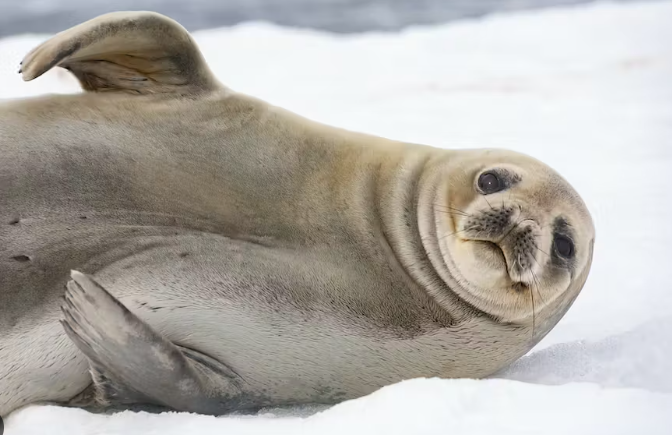
3. How the Antarctic Fur Seal Came Back From the From the Brink of Extinction
Once on the verge of extinction, the Antarctic fur seal (Arctocephalus gazella) has staged a triumphant comeback. Today, millions navigate the icy water of the Southern Ocean near the Antarctic Convergence, showcasing remarkable adaptability. This captivating species predominantly inhabits the Subantarctic islands, where the cold Antarctic waters meet warmer currents. Since they spend so much time at sea, there are only rough estimates of the Antarctic fur seal population which place the population at between two to four million.
However, Antarctic fur seals face continued threats from entanglement in marine debris to climate change. Warming waters affect the distribution and abundance of krill, as they are susceptible to changing ocean temperatures and acidity. While the IUCN Red List classifies Antarctic fur seals as “Least Concern”, protections remain essential for their future. Conservation efforts include monitoring entanglement rates, regional fishery management, and reducing marine pollution.
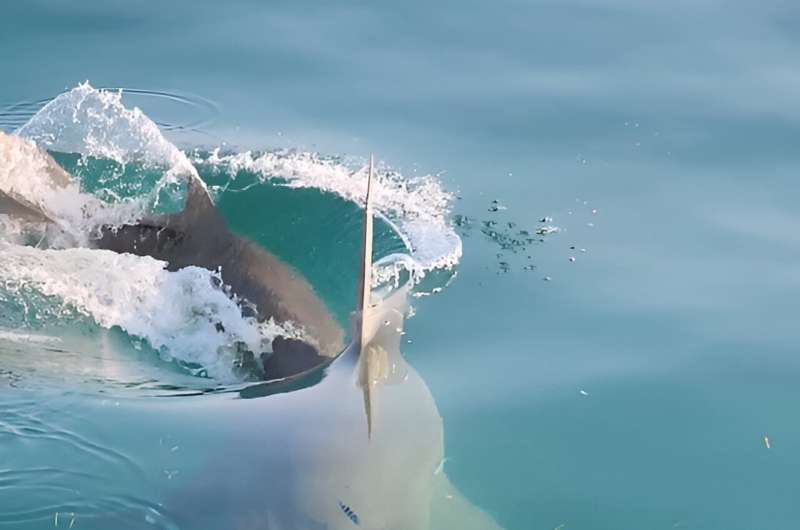
4. Don’t Blame the Sharks: Research Led by UMass Amherst Reveals Why More Hooked Tarpon Are Being Eaten – Southeastern USA
Atlantic tarpon are one of the most iconic saltwater fish in the Southeastern and Gulf states. The tarpon fishery, which extends from Texas to the Carolinas, is a high-dollar industry, and the fish is tied deeply to local culture. A team of researchers at the University of Massachusetts Amherst has found that an increasing number of great hammerhead sharks are eating tarpon hooked by anglers at Bahia Honda, Florida—a prime tarpon fishing spot in the Florida Keys.
While this is not a sign that the ecosystem is out of balance, researchers are urging solutions that don’t impact either species. The great hammerhead is listed as critically endangered and the tarpon as vulnerable. Also, anglers are expressing concern about hammerheads taking their catch. Finding a balance is necessary. Suggestions include using fishing gear that allows landing tarpon faster and using fish-finders to monitor for sharks.
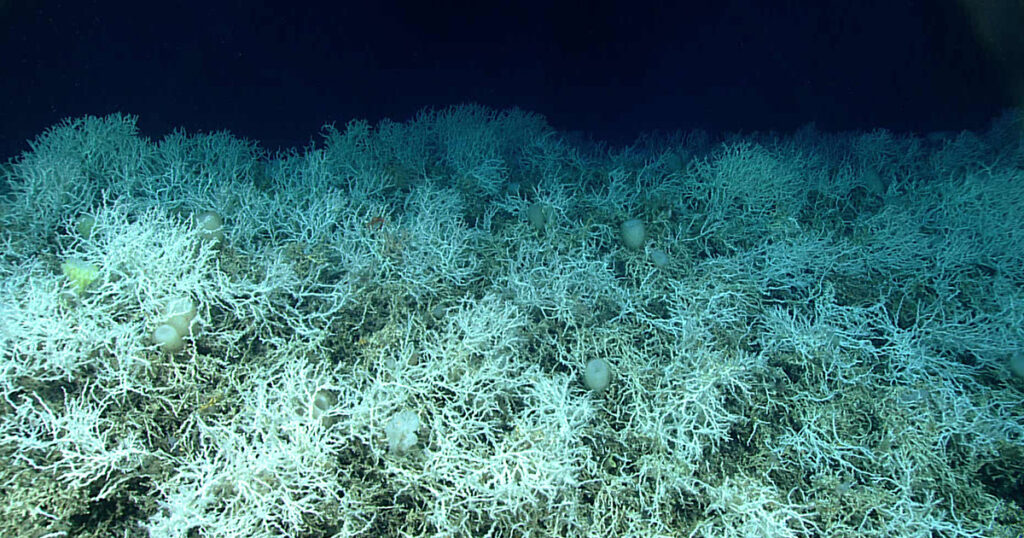
5. Multi-Partner Mapping Effort Reveals Largest Known Deep-Sea Coral Reef Habitat – Offshore, South East USA
MassCovering 6.4 million acres, an underwater seascape of cold-water coral mounds located in the Blake Plateau, offshore the southeast United States coast, has been deemed the largest deep-sea coral reef habitat yet discovered. Extensive research has been conducted to discover new mounds throughout the Blake Plateau and to document the ecological importance of these habitats. The recently completed mapping effort in the region reveals the full extent and characteristics of these important deep-sea coral mound features.
The largest area is primarily made up of Desmophyllum pertusum, a stony coral most commonly found at depths where waters have an average temperature of 4°C. These corals are known to be important ecosystem engineers, creating structures that provide shelter, food, and nursery habitat to other invertebrates and fish. Such studies are essential for predicting the impacts of human activities on corals and for developing plans for their protection.
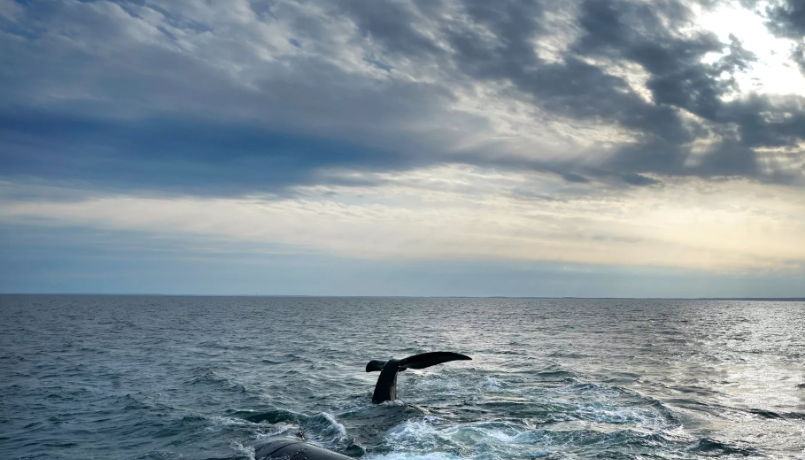
6. High Seas Treaty: Palau and Chile First Countries to Ratify Deal to Protect International Waters
Only about one percent of the ocean beyond countries’ maritime borders is currently protected. On Monday, Palau became the first nation to officially approve and sanction the UN High Seas Treaty at the UN headquarters in New York. The Chilean Senate also voted unanimously in favour of ratifying the historic conservation agreement on 17 January. The high seas are the ocean beyond countries’ maritime borders and it covers half of the planet, helping to regulate our climate and supporting a wealth of biodiversity.
Though more than a dozen international organizations regulate the world’s oceans, they don’t have oversight of seas far from countries’ shores, leaving the area exposed to threats from commercial operations like deep-sea mining, overfishing, and pollution. Sixty countries need to ratify the treaty by the 2025 UN Ocean Conference in France to keep UN ocean protection goals in sight.
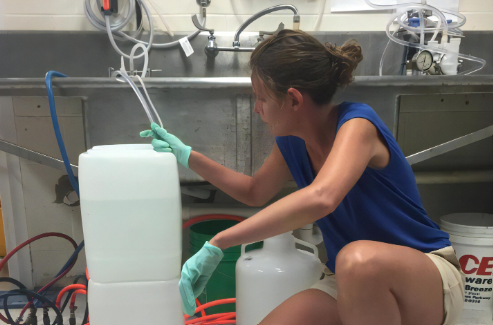
7. Deepwater Horizon Oil Spill Study Could Lead to Overhaul of Cleanup Processes Worldwide – Stirling, Scotland
New research by the University of Stirling could lead to major improvements in marine oil spill cleanup processes. The innovative study assessed the impact of the Deepwater Horizon oil spill on microscopic seawater bacteria that perform a significant role in ecosystem functioning. The findings show chemical oil dispersants used to mitigate the impact of the Deepwater Horizon disaster in 2010 worsened the stress response in bacteria and those harmful effects were then intensified by exposure to sunlight.
The spill—the largest in history with 4.9 million barrels of crude oil released into the Gulf of Mexico—happened in the spring, a season characterized by extreme sunlight in the region. The study revealed the impact of oil and dispersants on cyanobacterial photosynthesis and has international significance for society and industry, further emphasizing the intricate interactions between contaminants, sunlight, and microbial communities.
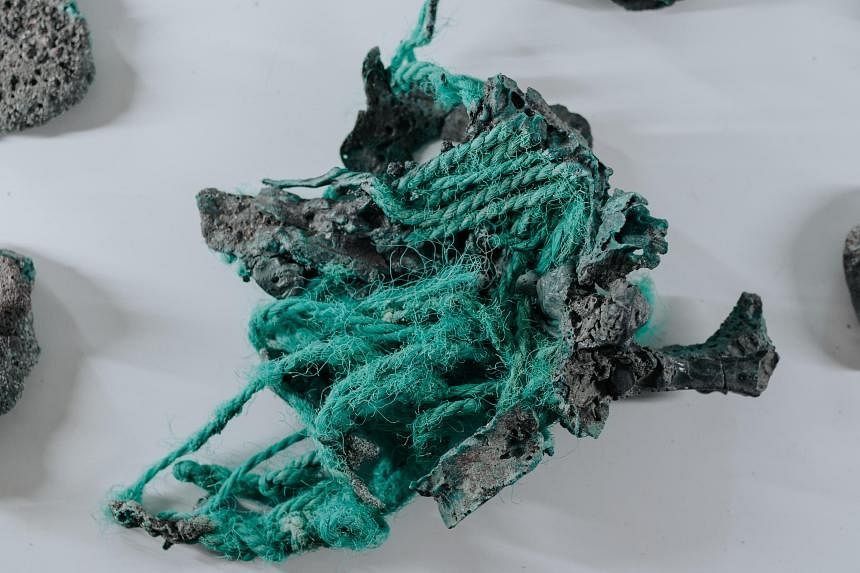
8. Plastistones: Rocks Formed From Plastic Pollution a ‘Terrifying’ Find
Singapore: A disturbing new find in areas around the world has researchers concerned. “Plastistones”, are peculiar-looking, blue-green composites formed when materials such as heavy metals, organic solvents, and microplastic debris are fused to the surface of sedimentary rocks. These rocks are a sort of new kind of geological formation, caused by humans, raising questions about a new geological age called Anthropocene, when humanity begins to alter the earth’s surface, atmosphere, oceans, and systems of nutrient cycling.
Because they are formed from plastic pollution, these rocks are evidence of the breakdown/leaching of the plastics into the environment, which in turn can be absorbed by living beings. Microplastics were first discovered in human blood samples in 2022, and now nanoplastics – about 1/70th the size of a human hair – can even penetrate cell membranes and affect organs.
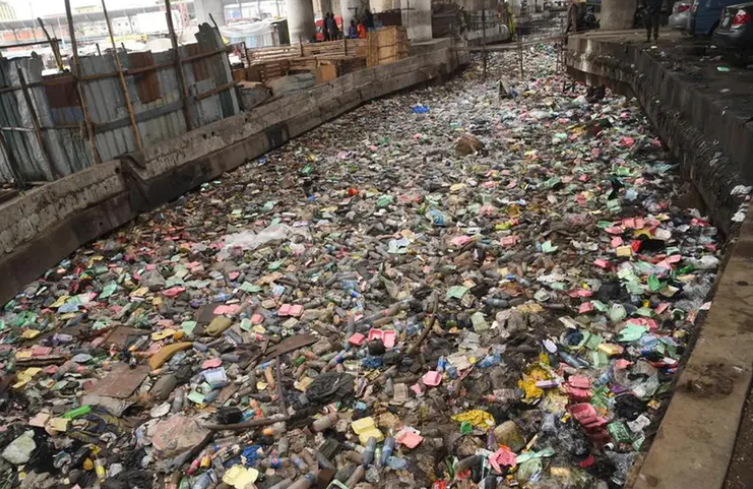
9. Nigeria’s Polluted Economic Hub Lagos Bans Styrofoam, Plastics
Nigeria’s Lagos State, which includes the country’s economic capital of more than 20 million people, has announced a ban on styrofoam and single-use plastics to curb pollution. The ban is effective immediately, however, environmentalists say enforcing it will be difficult, as many street vendors in the city use the banned items in food delivery. Folawemi Umunna, co-founder of the Climate and Ecological Protection Initiative, is encouraged by the initiative.
“This is wonderful news for the environment on different levels and if this is effectively executed, capable of reducing a substantial amount of CO2 emissions in tonnes in the Lagos State perimeter,” she said. “This is beside the social menace of blocking drainages and negatively affecting marine biodiversity.” Lagos – sitting between the Atlantic Ocean and lagoons – faces a mix of climate-related problems, with many areas overpopulated and at risk of flooding.

10. Nine Thousand Dead Dolphins a Year on the French Coast. Is a Temporary Fishing Ban the Answer?
France: In the Bay of Biscay, an estimated 9,000 dolphin deaths are caused each year by accidents with fishing equipment. Dolphins become trapped in gear like nets, ropes, and lines. Larger animals might escape but often become ensnared, dragging around heavy ropes, buoys, or nets for years. France has introduced a temporary one-month ban on nearly all commercial fishing in the Bay of Biscay in an effort to protect dolphins.
The measure applies to both French and foreign fishing companies. Local fishermen and industry professionals have lambasted the ban as “absurd” and say it puts fishermen’s livelihoods at risk with a potential loss of millions of euros in income. Based on boat size, roughly 450 French vessels will be forced to remain in port. In response, the country’s government has promised compensation―up to 75 percent of revenue losses.
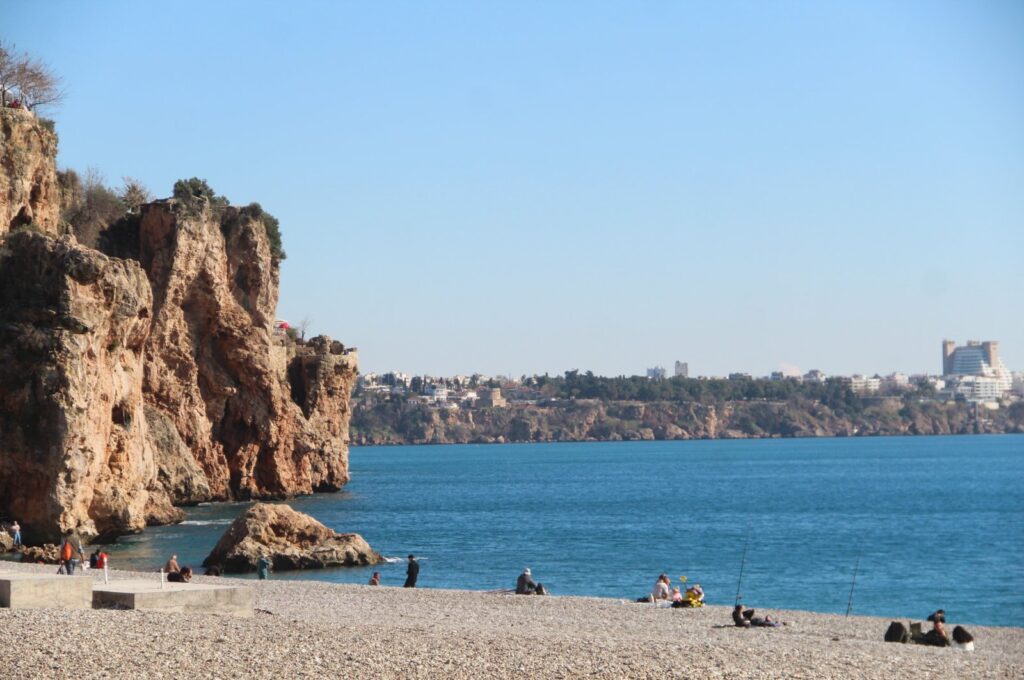
11. Alarming Plastic Waste Increase Threatens Turkish Mediterranean
Turkey: The Mediterranean region faces a severe threat from plastic pollution, with an average of 229,465 tons of plastic waste added annually, according to warnings from experts. Middle East Technical University (METU) Marine Sciences Institute faculty member Professor Ahmet Kıdeyş expressed concerns over the escalating pollution levels in the Mediterranean, comparing it unfavorably to other seas worldwide. Professor Sedat Gündoğdu from Çukurova University’s Faculty of Fisheries has highlighted the primary factors contributing to pollution in the Mediterranean.
Gündoğdu pointed out that widespread use of single-use plastics in the tourism sector, waste generated by tourist activities in coastal areas, and countries lacking proper waste management infrastructure along the Mediterranean coast are major contributors. Expressing his concerns, Gündoğdu warned of an impending crisis where the seas could transform into a “plastic soup.”
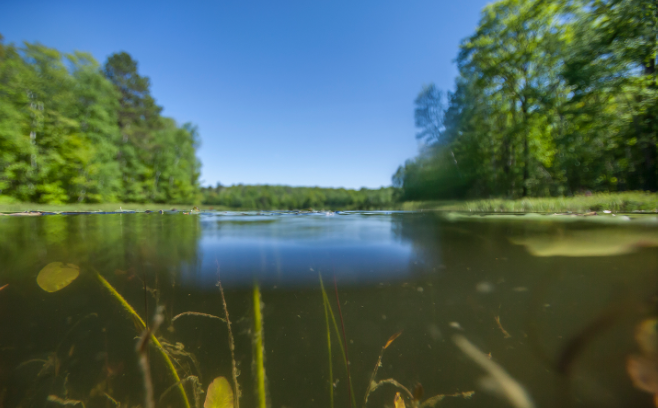
12. Environmental Protection Agency – No Improvement in River and Stream Nitrogen Pollution in the Gulf of Mexico
USA, The nation’s rivers and streams remain stubbornly polluted with nutrients that contaminate drinking water and fuel a gigantic dead zone for aquatic life in the Gulf of Mexico, according to an Environmental Protection Agency (EPA) assessment. This problem is only expected to get harder to control as climate change produces more intense storms that dump rain on the Midwest and South.
Heavy rains flood farm fields, pick up commercial fertilizers, and carry them into nearby rivers. About half of all river miles were found to be in poor condition for snails, worms, beetles, and other bottom-dwelling species. About a third were also rated as having poor conditions for fish based on species diversity. The EPA established the Hypoxia Task Force in the late 1990s to reduce nutrient pollution and shrink the dead zone, but it relies on voluntary efforts to reduce farm runoff.

13. Revised Understanding of the Megalodon Body Type is a ‘Eureka-Moment’ in Science
California: A new study shows the Megalodon, a gigantic shark that went extinct 3.6 million years ago, was more slender than earlier studies suggested. University of California – Riverside biologist and paper first author Phillip Sternes said: “It still would have been a formidable predator at the top of the ancient marine food chain, but it would have behaved differently based on this new understanding of its body.” “It was still a giant, predatory shark.
But the results strongly suggest that the Megalodon was not merely a larger version of the modern great white shark”. A revised understanding of the Megalodon body type would in turn affect scientists’ understanding not only of the giant shark itself but also of its impact on the ecology and evolution of marine ecosystems that shaped the present-day oceans.
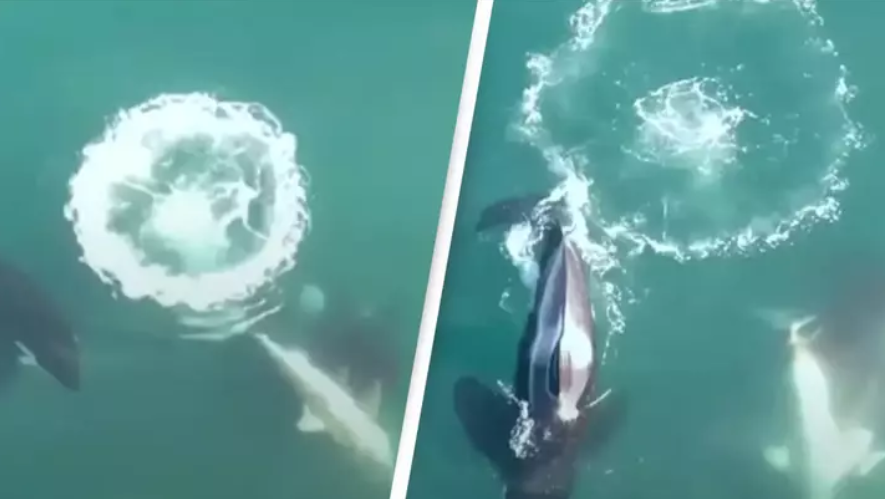
14. Killer Whales Hunting Great White Sharks – Brutal Reality of Nature – South Africa
South Africa: A team of scientists used a helicopter and a drone to capture the first-ever aerial footage of orcas hunting and killing great white sharks in May 2022, when a pod of orcas embarked on an hour-long killing spree. The footage was submitted as part of a paper published in The Ecological Society of America’s journal Ecology, offering insight into the clashes between the two major marine predators.
The new study analysed drone and cage dive boat survey data before and after these predation events and found that, while multiple sharks were seen on the day of the predations, only a single white shark was seen in the 45 days afterward, confirming a flight response by sharks. David Hurwitz, a boat-based whale-watching operator had previously witnessed a killer whale kill a copper shark, but said: “This new observation is really something else.”
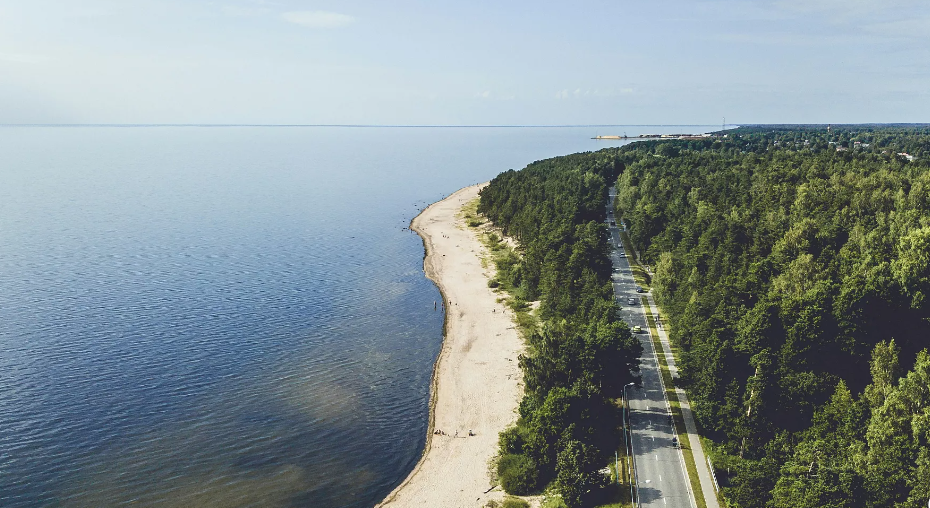
15. ‘Save the Baltic’ a Unique Mission to Foster the Culture of Marine Conservation
Lithuania: A team of scientists will walk nearly 5,500 km as part of an environmental campaign to raise public awareness of the ‘critical state’ of the Baltic Sea – one of the most polluted seas in the world. Efforts to clean up the Baltic Sea and prevent overfishing have increased over the last few decades through initiatives led by the EU and many of the sea’s nine surrounding countries.
One of the main ‘diseases’ of the Baltic Sea is eutrophication caused by excess nitrogen and phosphorus, which leads to the formation of huge dead zones where sea life lacks oxygen. The expedition’s goal is to “inform the public about the state of water ecosystems, raise awareness about human impact on nature, and introduce ways to halt the decline in marine biodiversity.”
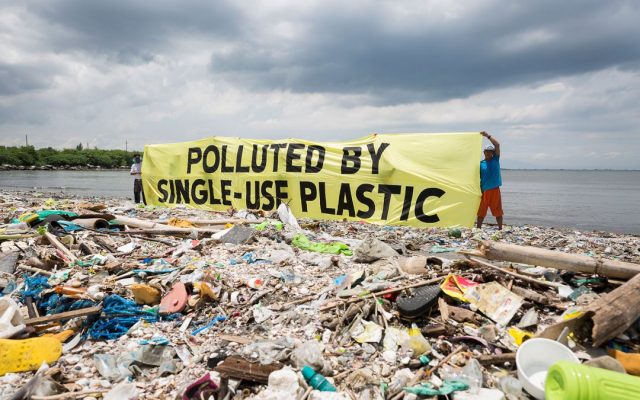
16. Institute Urges FG, States to Ban Single-Use Plastics
Nigeria: The Africa Institute of Waste Management and Environmental Studies (FAIWMES) called on the federal and state governments to adopt a nationwide ban on single-use plastics. Dr. Tanko, FAIWMES National President, made this submission in an interview with the Newsmen. He stated, “A total ban on single-use plastics will be a more effective way to mitigate environmental damage; emphasising the importance of sustainable practices over economic measures.”
In addition, the institute was actively involved in promoting and implementing reusable and biodegradable materials as alternatives to single-use plastics and the institute emphasised the importance of public campaigns to raise awareness about the harmful effects of plastic pollution and the advantages of sustainable practices. Dr. Tanko advocated for stricter laws governing the manufacture, use, and disposal of plastics and the need to enforce sanctions for non-compliance, supporting recycling facilities, and proposing an outright prohibition on single-use plastics.
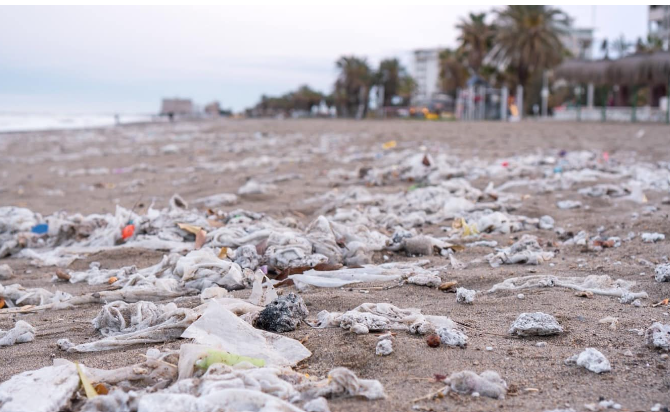
17. Plastic Bag Bans Have Already Prevented Billions of Bags From Being Used, Report Finds
USA: Over the past several years, U.S. cities and states have passed hundreds of policies restricting the sale and distribution of single-use plastic bags. A new report says these laws have largely succeeded in their goal. The case against plastic bags is simple. They cause pollution at every stage of their lifespan, starting with the extraction of the oil and gas that’s used to make them.
Plastic bags cannot be recycled and, alongside plastic films, cause more deaths of sea turtles, whales, dolphins, and porpoises than any other kind of plastic. They can also shed tiny fragments called microplastics, exposure to which is linked to health problems in humans. The report suggests that plastic bag bans can eliminate nearly 300 single-use plastic bags per person per year. The bottom line is that plastic bag bans work.
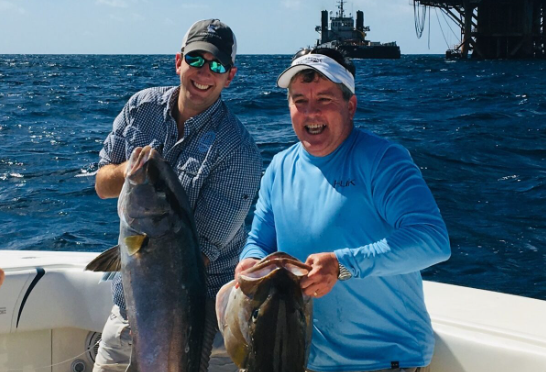
18. Removing Retired Gulf Rigs Ruins Offshore Fishing – True or False? Louisiana, USA
USA: Decades-old offshore oil and gas structures, no longer involved in extraction, still provide an extensive network of the world’s most productive artificial reefs, and bipartisan legislation is aimed at protecting these rigs-turned-reefs. In the next decade, as many as 700 of the 1,550 remaining rigs could be removed. When they are removed, federal law requires that the sea floor be stripped bare, with all signs of the rig and associated reef removed. Two Gulf Coast congressmen stepped in to try and save some of the ecologically and economically valuable reefs that have colonized the rigs. They introduced H.R. 6814 last year. Named the “Marine Fisheries Habitat Protection Act,” it would change federal law and policy to require the NOAA to examine the Gulf’s artificial reefs and associated fisheries production while encouraging more participation in the Bureau of Safety and Environmental Enforcement’s Rigs-to-Reefs Program.
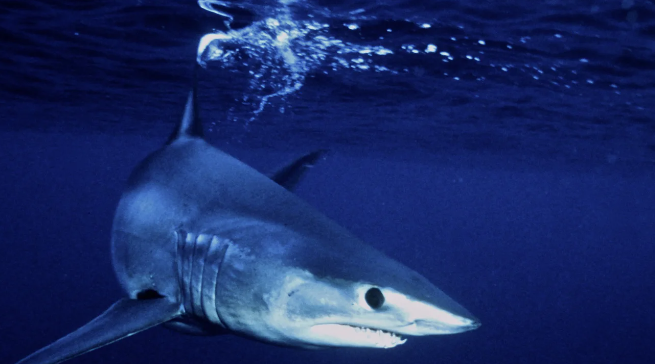
19. The ‘Meg’ May Have Been Longer and Less Chonky Than Previously Thought
While the mighty megalodon went extinct about 3.6 million years ago, its grip on popular culture remains strong. However, the ‘meg’ may not have been as wide as scientists previously believed. Whether the ancient megalodon was relatively narrow or wide remains the subject of hot paleontological debate. Still, a study published January 21 in the journal Palaeontologia Electronica now proposes that the megalodon was likely more slender than other studies suggested.
The bodies of these apex predators were mainly built from cartilage, which is rarely preserved in the fossil record, making a full skeleton difficult if impossible to find. This has made the megalodon´s true size a decades-long paleontological mystery. But a continued mystery like this makes paleontology a fascinating and exciting scientific field, and sci-fi fans and scientists alike will have gaps to fill in the megalodon’s story and its life stalking ancient seas.




